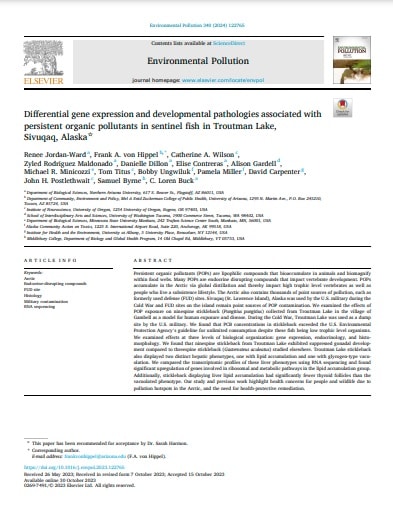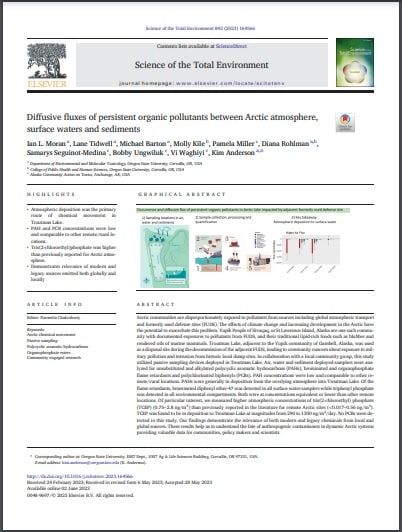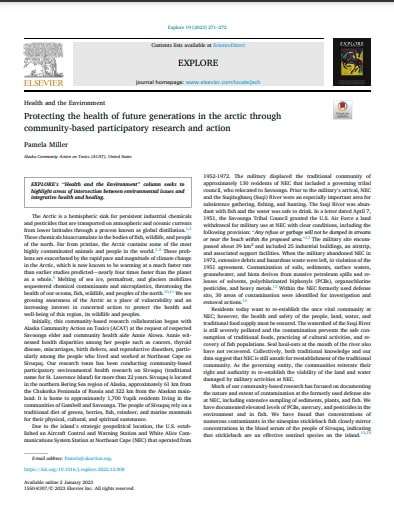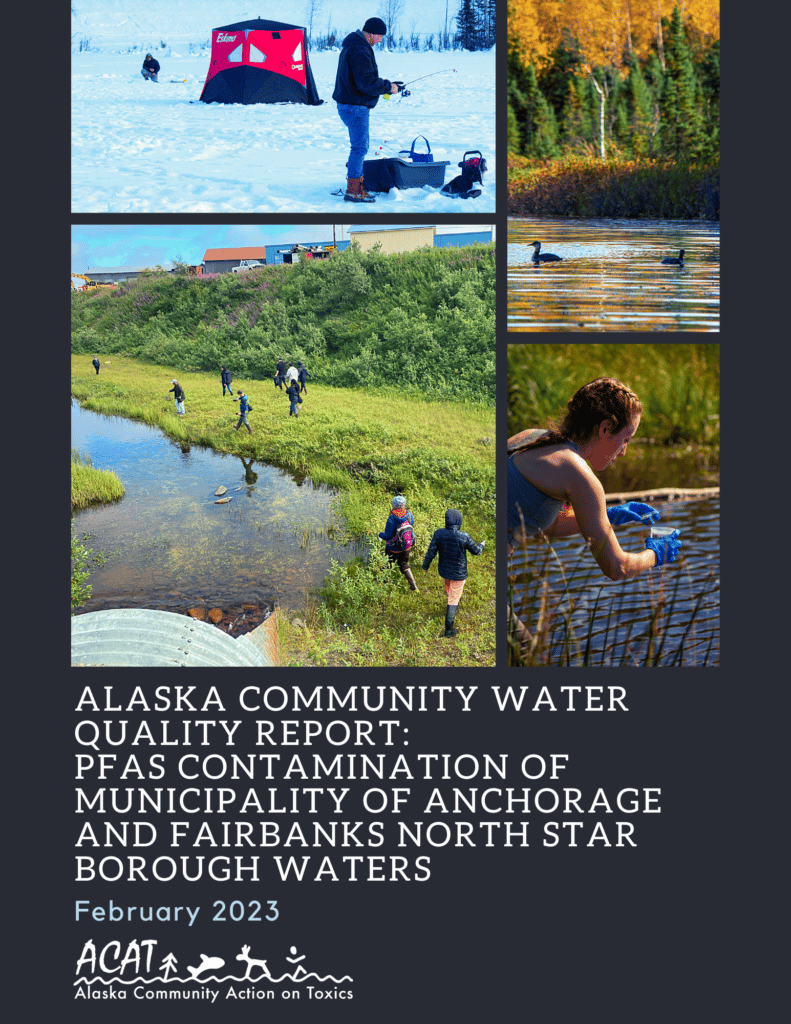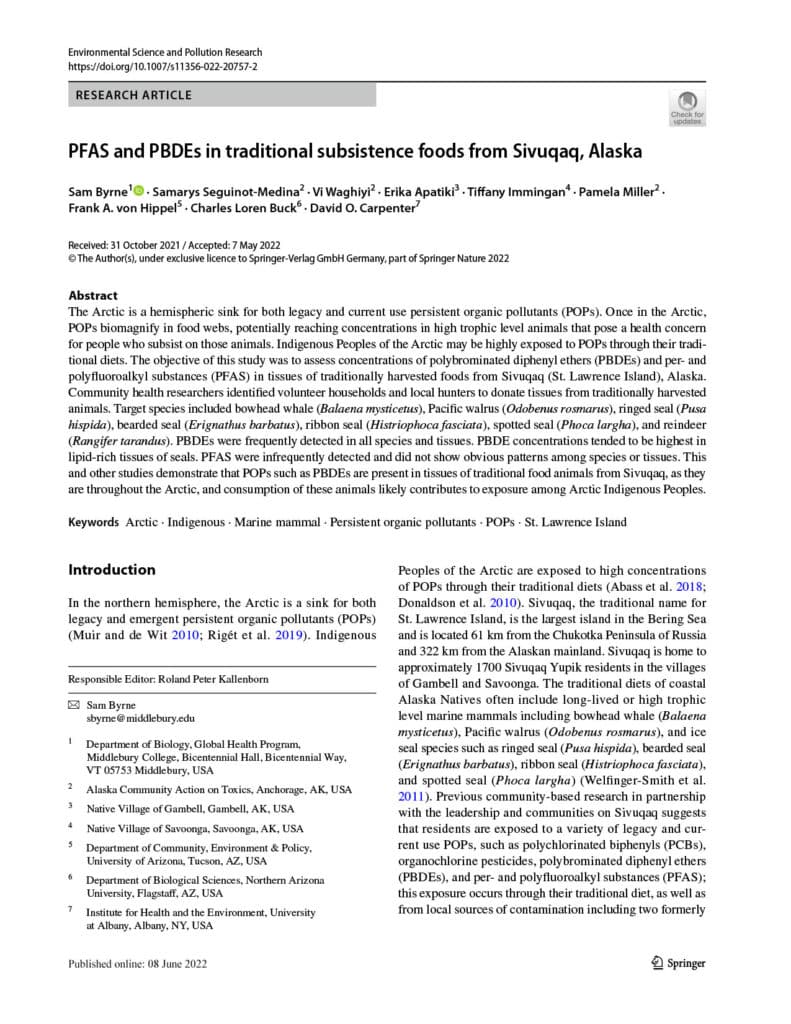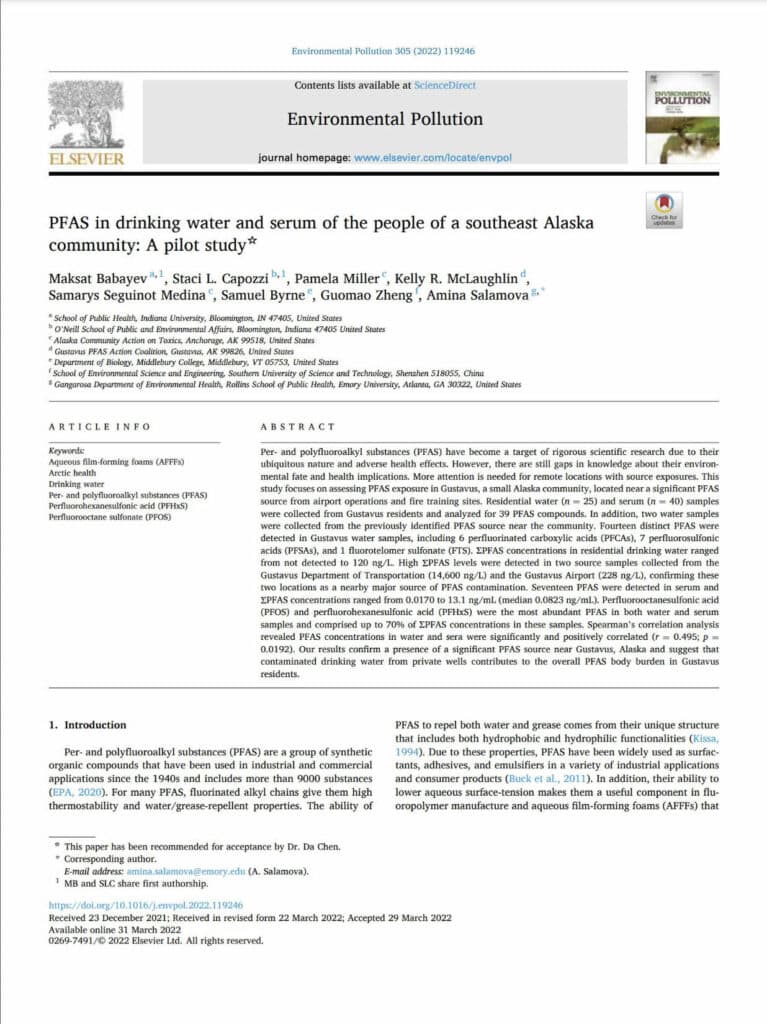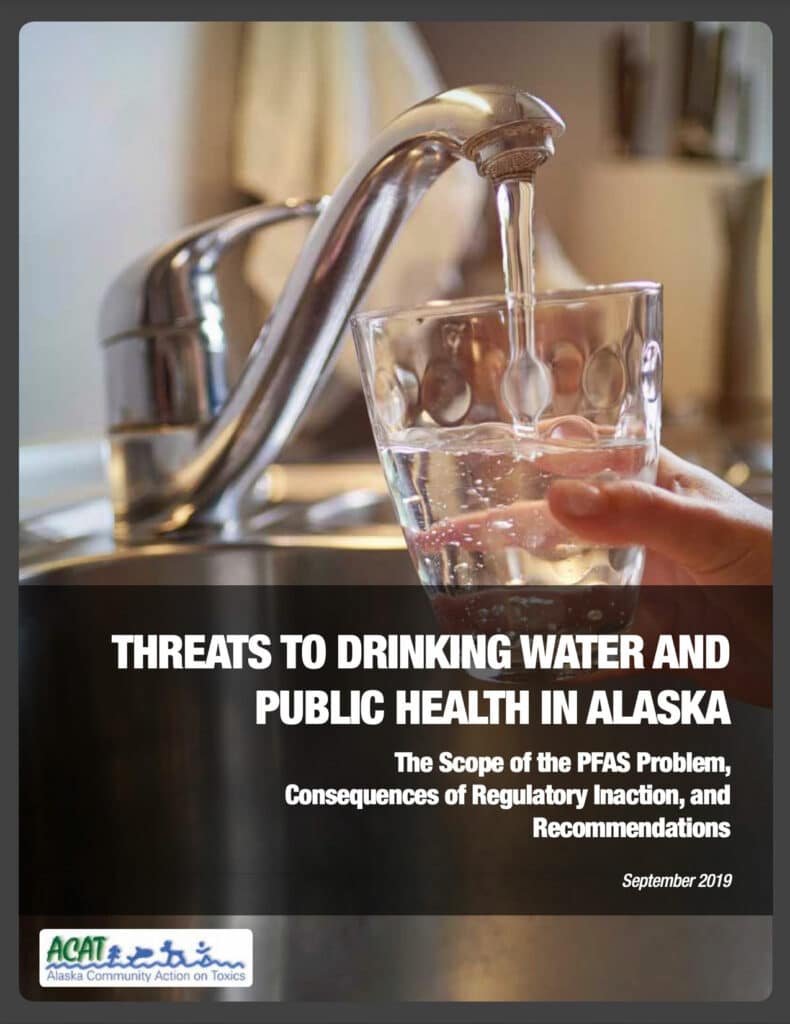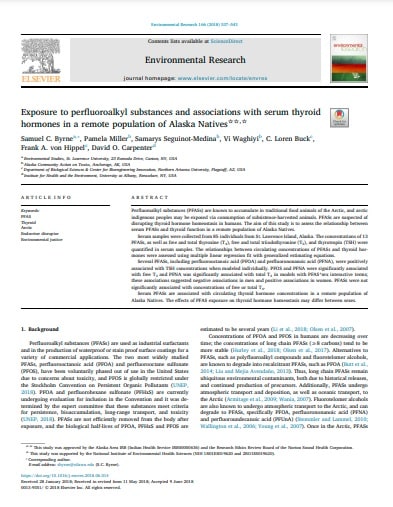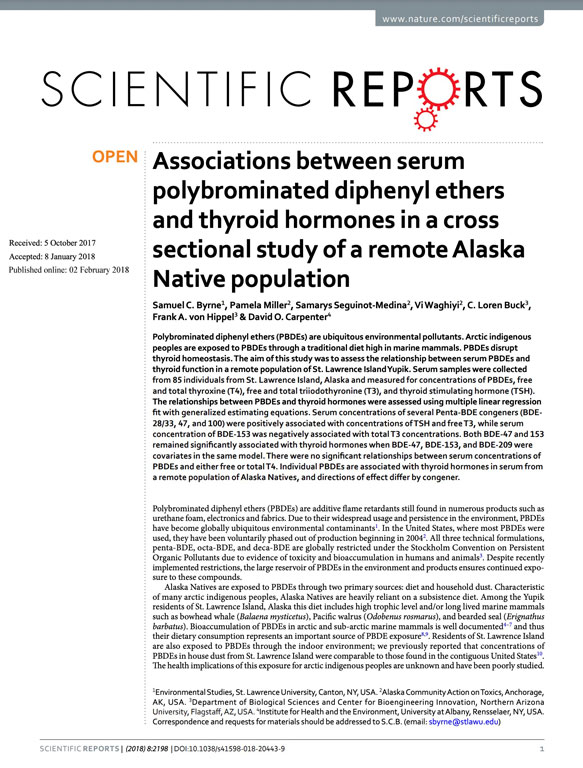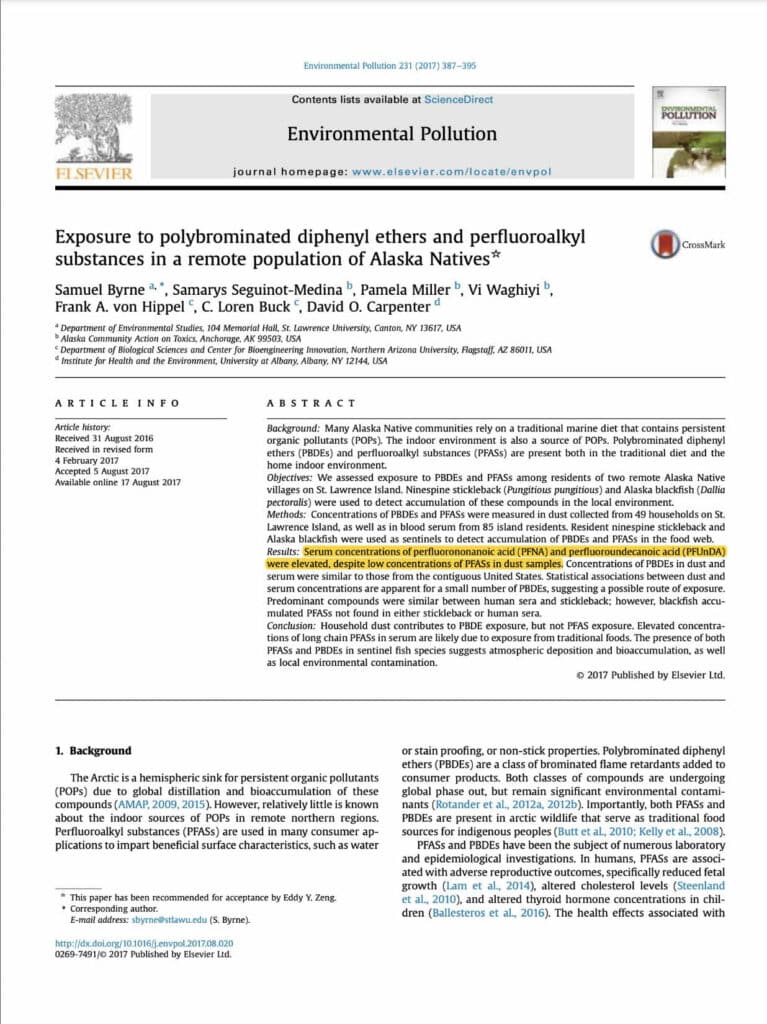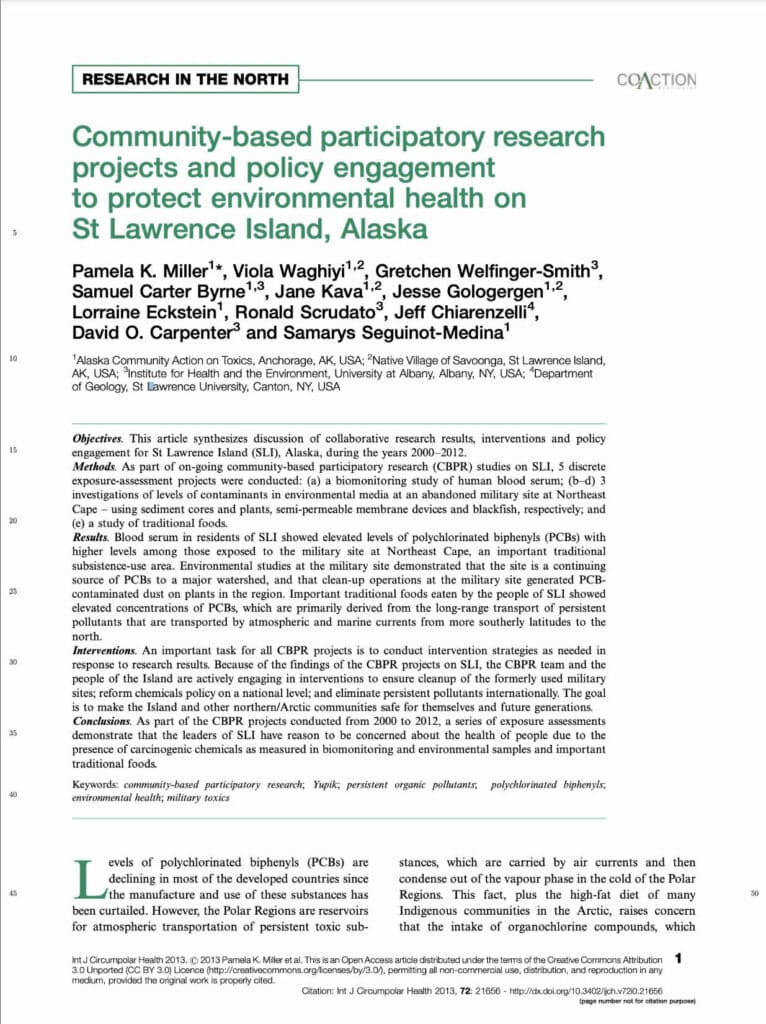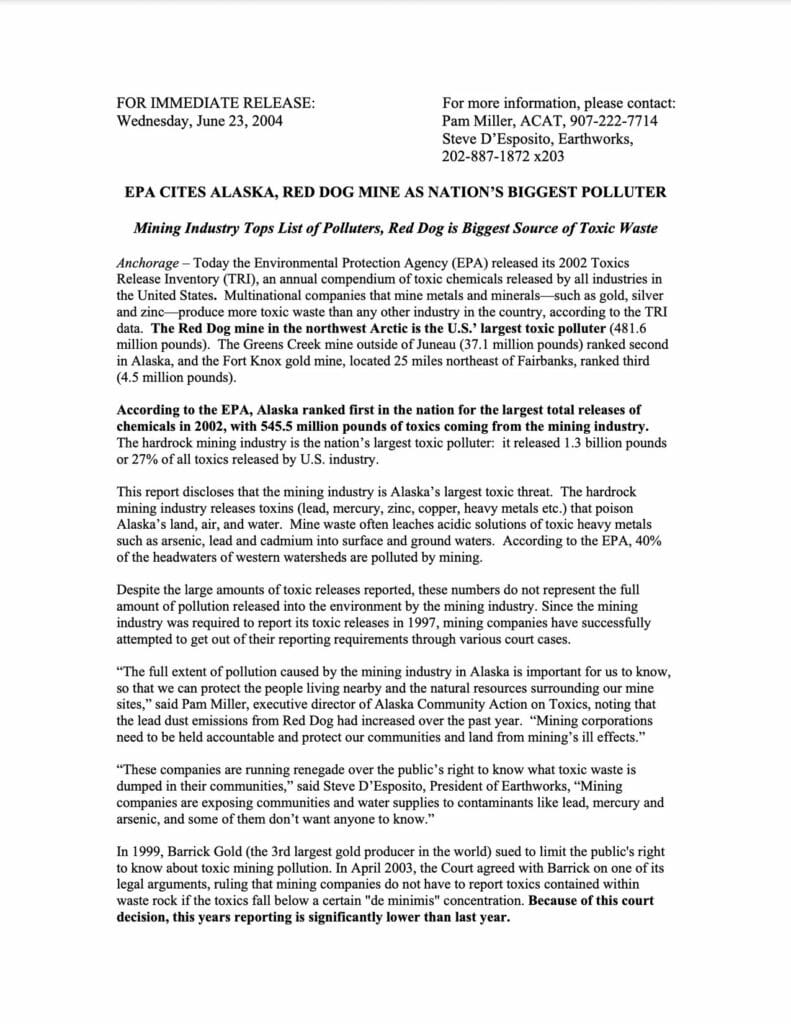Community Based Participatory Research
Differential gene expression and developmental pathologies associated with persistent organic pollutants in sentinel fish in Troutman Lake, Sivuqaq, Alaska
Persistent organic pollutants (POPs) are lipophilic compounds that bioaccumulate in animals and biomagnify within food webs. Many POPs are endocrine disrupting compounds that impact vertebrate development. POPs accumulate in the Arctic via global distillation and thereby impact high trophic level vertebrates as well as people who live a subsistence lifestyle. The Arctic also contains thousands of point…
Read MoreDiffusive fluxes of persistent organic pollutants between Arctic atmosphere, surface waters and sediments
Arctic communities are disproportionately exposed to pollutants from sources including global atmospheric transport and formerly used defense sites (FUDS). The effects of climate change and increasing development in the Arctic have the potential to exacerbate this problem. Yupik People of Sivuqaq, or St Lawrence Island, Alaska are one such community with documented exposures to pollutants from FUDS, and their…
Read MoreProtecting the health of future generations in the arctic through community-based participatory research and action
The Arctic is a hemispheric sink for persistent industrial chemicals and pesticides that are transported on atmospheric and oceanic currents from lower latitudes through a process known as global distillation. These chemicals bioaccumulate in the bodies of fish, wildlife, and people of the north. Far from pristine, the Arctic contains some of the most highly…
Read MoreAlaska Community Water Quality Report: PFAS Contamination of Municipality of Anchorage and Fairbanks North Star Borough Waters
Alaska Community Action on Toxics (ACAT) conducted independent water quality testing in 2022 that showed PFAS (per- and polyfluoroalkyl substances) contamination in Anchorage lakes as well as in Ship Creek. These results show contamination in lakes used for swimming and fishing. The results also show contamination in Ship Creek downstream from Joint Base Elmendorf and…
Read MorePFAS and PBDEs in traditional subsistence foods from Sivuqaq, Alaska
The Arctic is a hemispheric sink for both legacy and current use persistent organic pollutants (POPs). Once in the Arctic, POPs biomagnify in food webs, potentially reaching concentrations in high trophic level animals that pose a health concern for people who subsist on those animals. Indigenous Peoples of the Arctic may be highly exposed to…
Read MorePFAS in drinking water and serum of the people of a southeast Alaska community: A pilot study
This study assessed PFAS exposure in Gustavus, a small southeast Alaska community, located near a significant PFAS source from airport operations and fire training sites. Our results confirm the presence of a significant PFAS source and suggest that contaminated drinking water from private wells contributes to the overall PFAS body burden in Gustavus residents.
Read MoreThreats to Drinking Water and Public Health in Alaska – The Scope of the PFAS Problem, Consequences of Regulatory Inaction, and Recommendations
This investigative report informs actions to address the public health crisis caused by PFAS contamination. In Alaska, the dispersive use of AFFF (aqueous film forming foam) on military bases and airports has contaminated the drinking water of communities from the North Slope to SE Alaska. PFAS have been discovered at over 100 individual sites (mostly…
Read MoreExposure to perfluoroalkyl substances and associations with serum thyroid hormones in a remote population of Alaska Natives
Perfluoroalkyl substances (PFASs) are known to accumulate in traditional food animals of the Arctic, and arctic indigenous peoples may be exposed via consumption of subsistence-harvested animals. PFASs are suspected of disrupting thyroid hormone homeostasis in humans. The aim of this study is to assess the relationship between serum PFASs and thyroid function in a remote…
Read MoreAssociations between serum polybrominated diphenyl ethers and thyroid hormones in a cross sectional study of a remote Alaska Native population
The aim of this study was to assess the relationship between serum PBDEs and thyroid function in a remote population of St. Lawrence Island Yupik people. Serum samples were collected from 85 individuals from St. Lawrence Island, Alaska and analyzed for concentrations of PBDEs, free and total thyroxine (T4), free and total triiodothyronine (T3), and…
Read MoreExposure to polybrominated diphenyl ethers and perfluoroalkyl substances in a remote population of Alaska Natives
We assessed exposure to PBDEs and PFAS among residents of two remote Alaska Native villages on St. Lawrence Island. We also measured these contaminants in the sentinel fish species, ninespine stickleback and Alaska blackfish.
Read MoreCommunity-based participatory research projects and policy engagement to protect environmental health on St Lawrence Island, Alaska
This article synthesizes our collaborative community-based research results, interventions and policy engagement for St Lawrence Island, Alaska, during the years 2000-2012.The research team conducted exposure assessment studies that investigated sources from military contamination as well as long range transport.
Read MoreRed Dog and Subsistence: Analysis of Reports on Elevated Levels of Heavy Metals in Plants Used for Subsistence Near Red Dog Mine, Alaska
The study team collected vegetation samples from a site at the port and from traditional subsistence harvest areas for the villages of Point Hope, Kivalina and Noatak, all three within an 80-mile radius of the mine. This study found that cadmium concentrations were highest in vegetation samples collected at the port and that lead concentrations…
Read More
